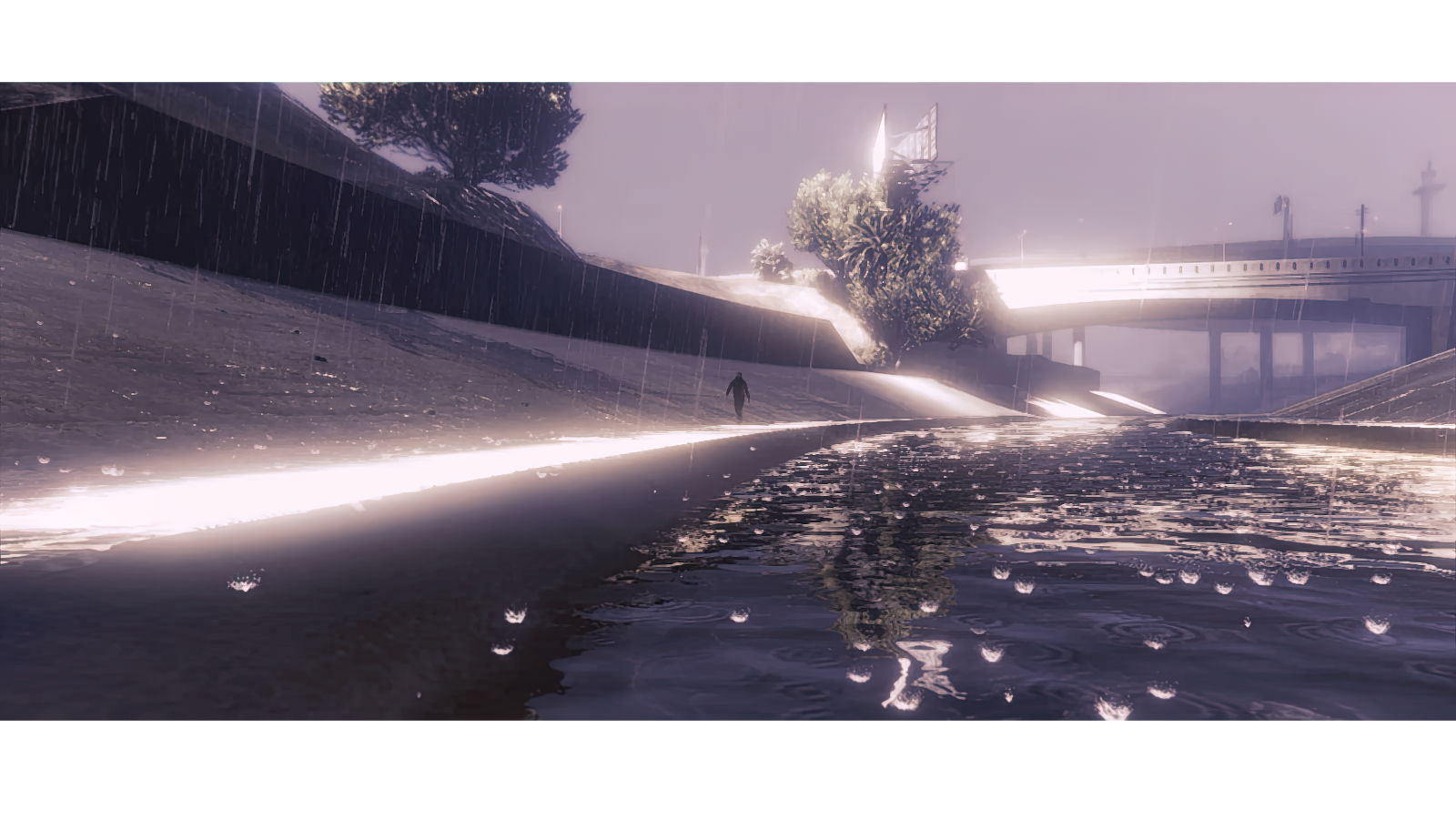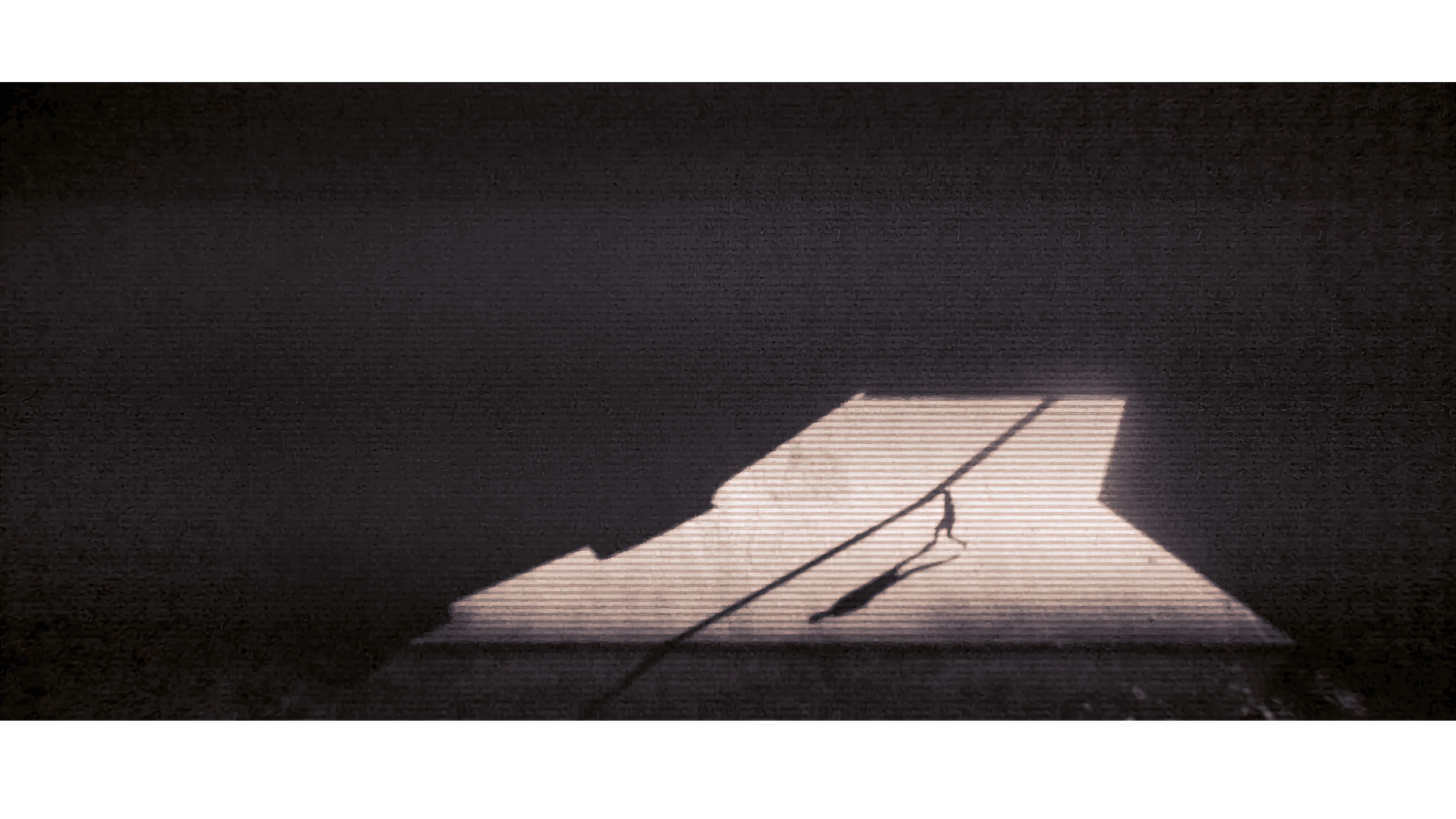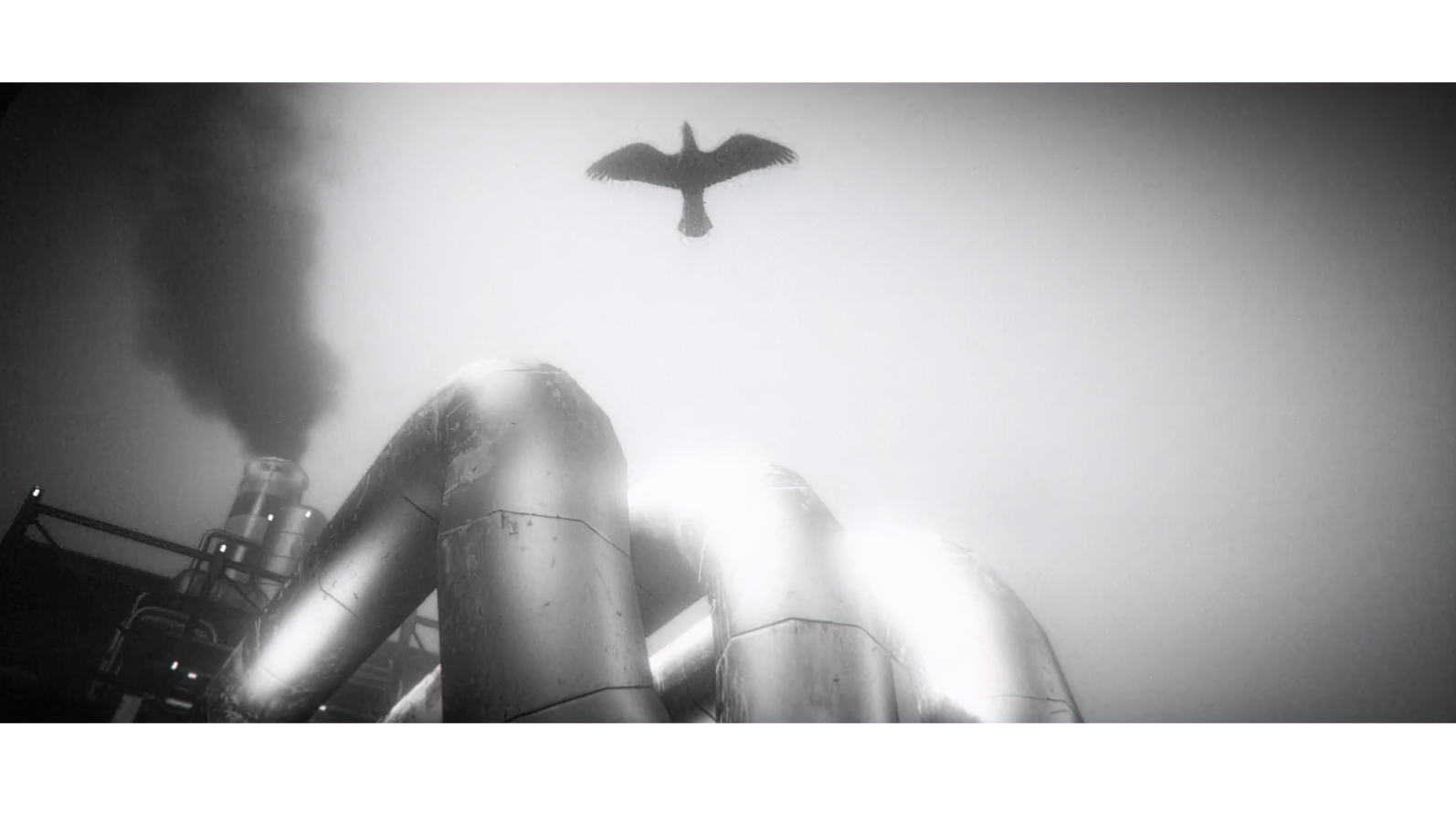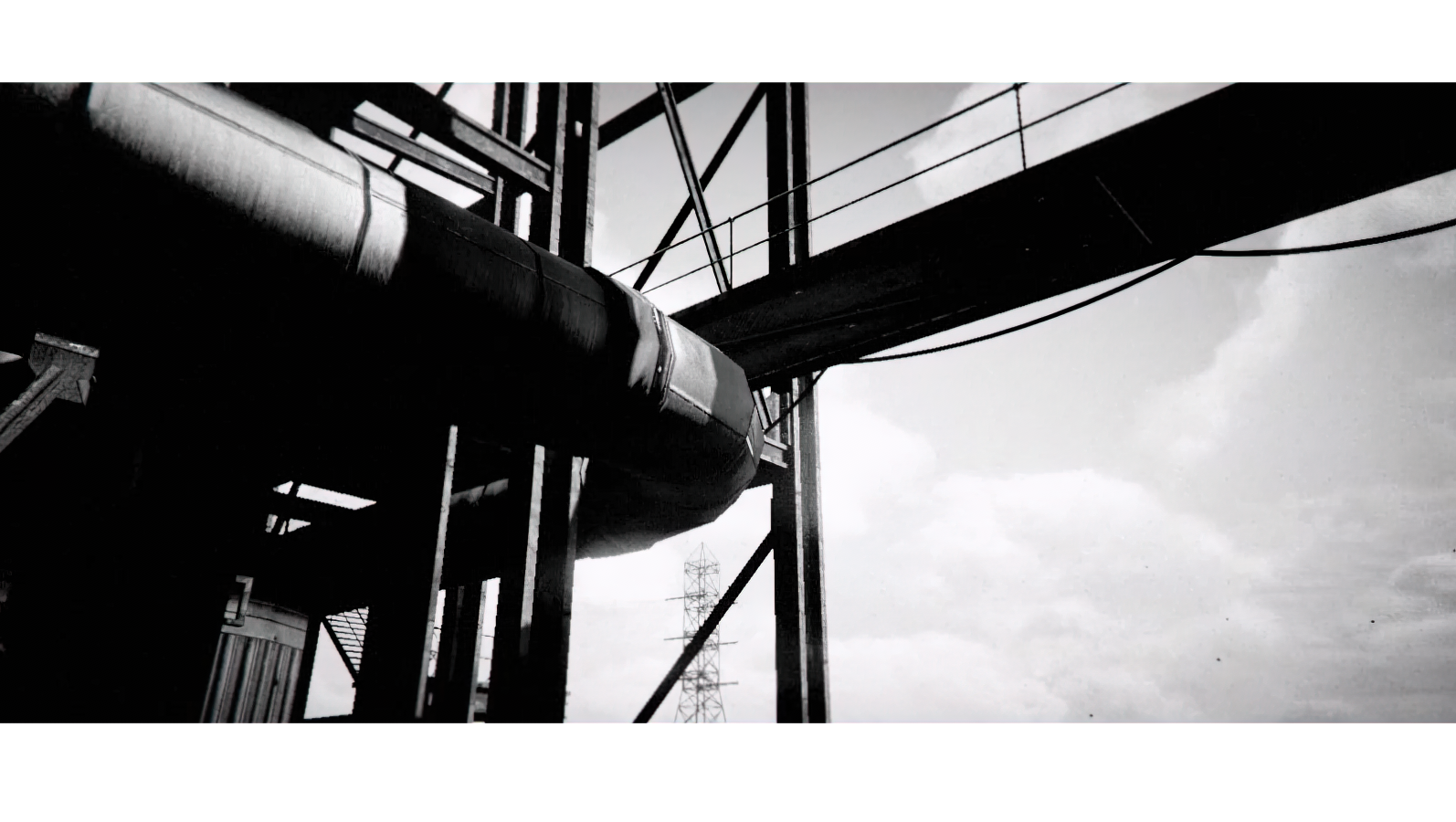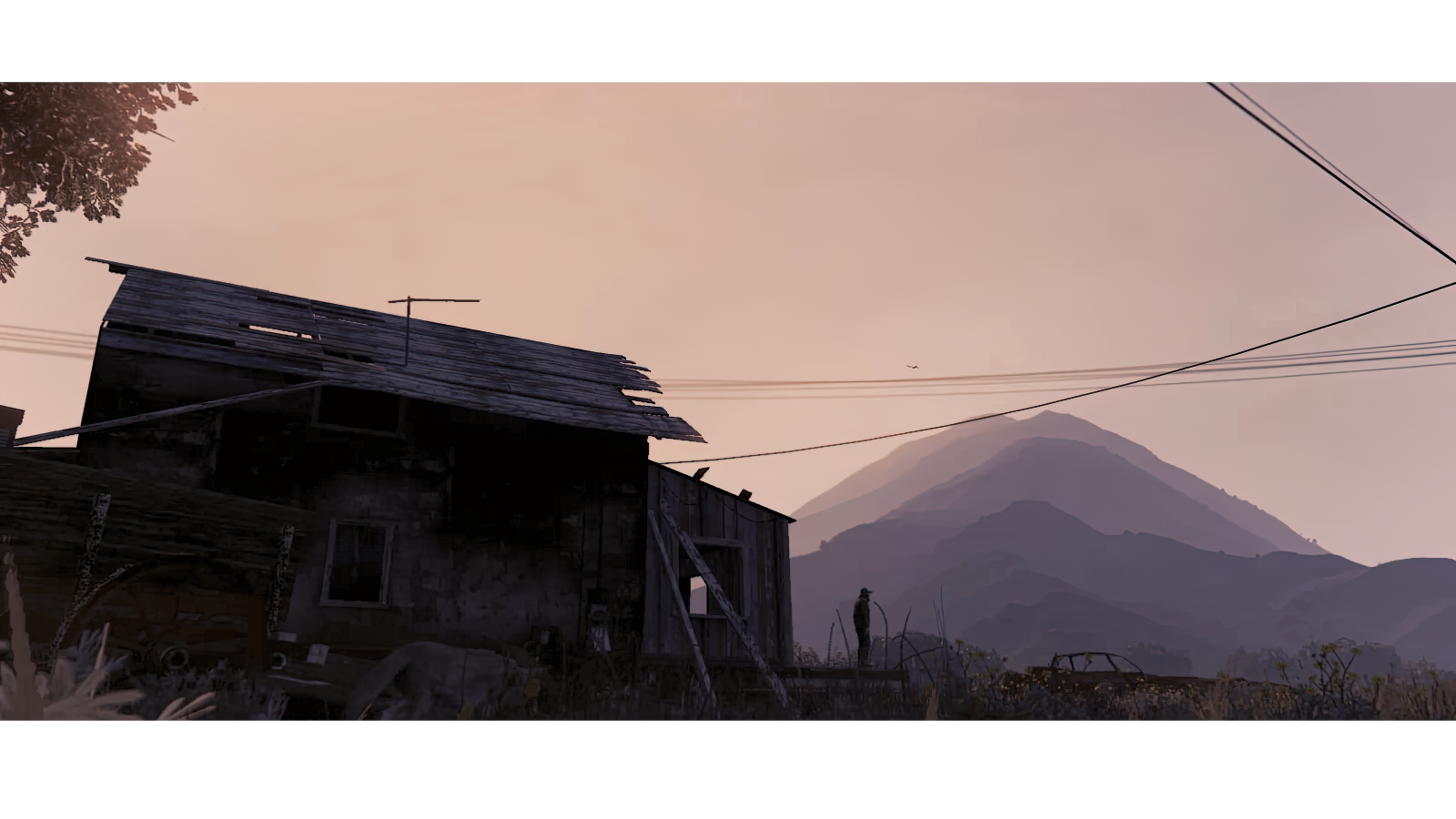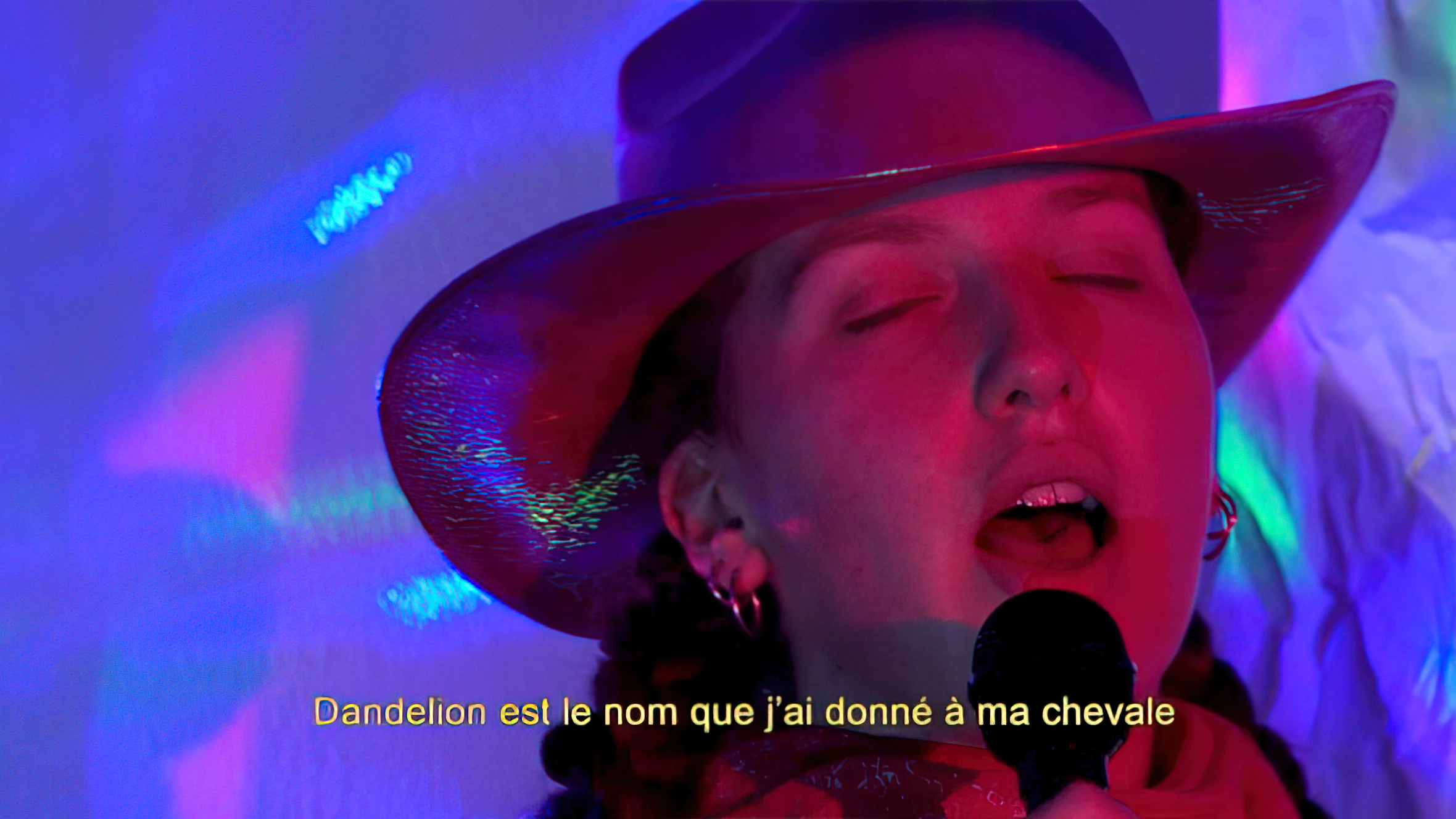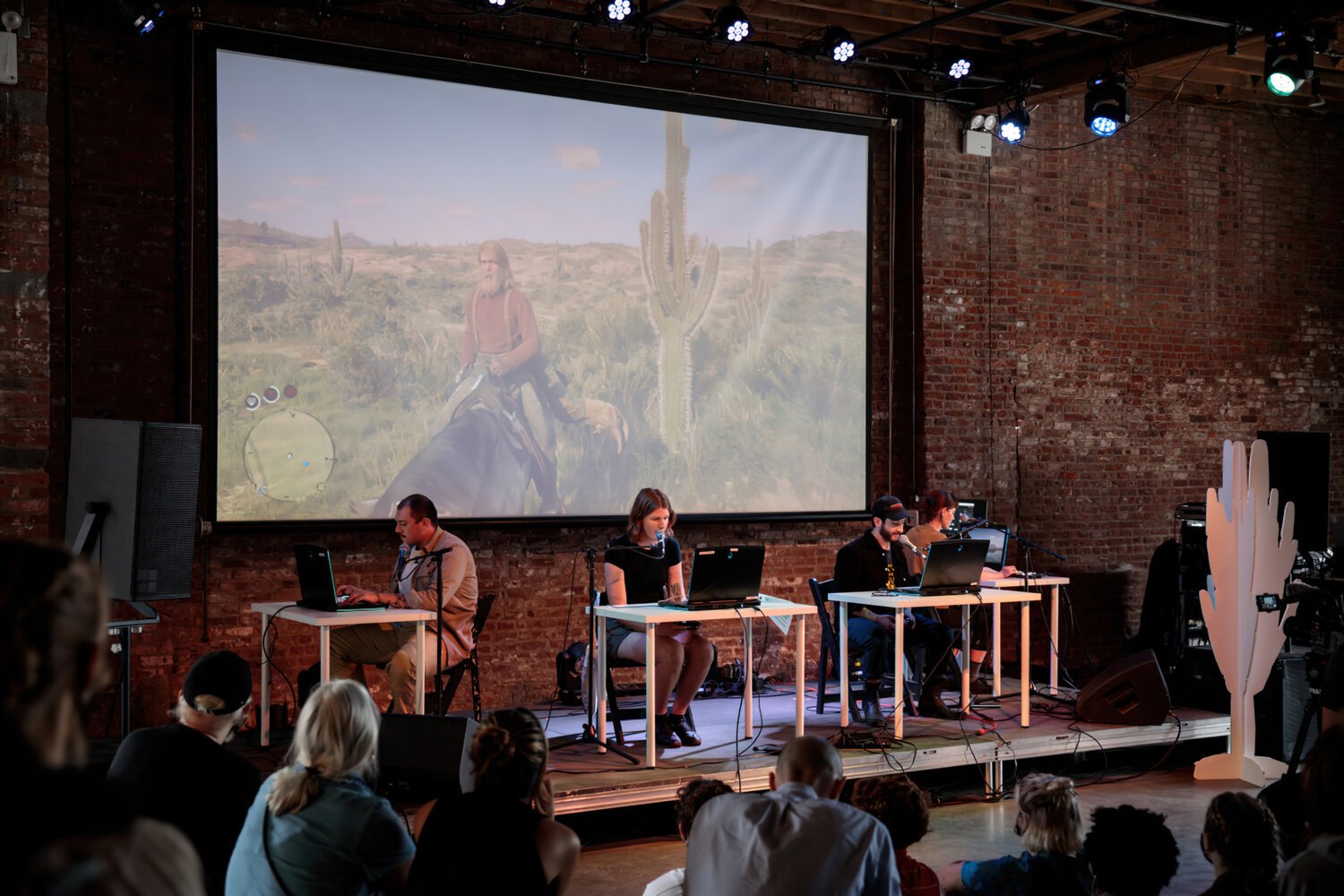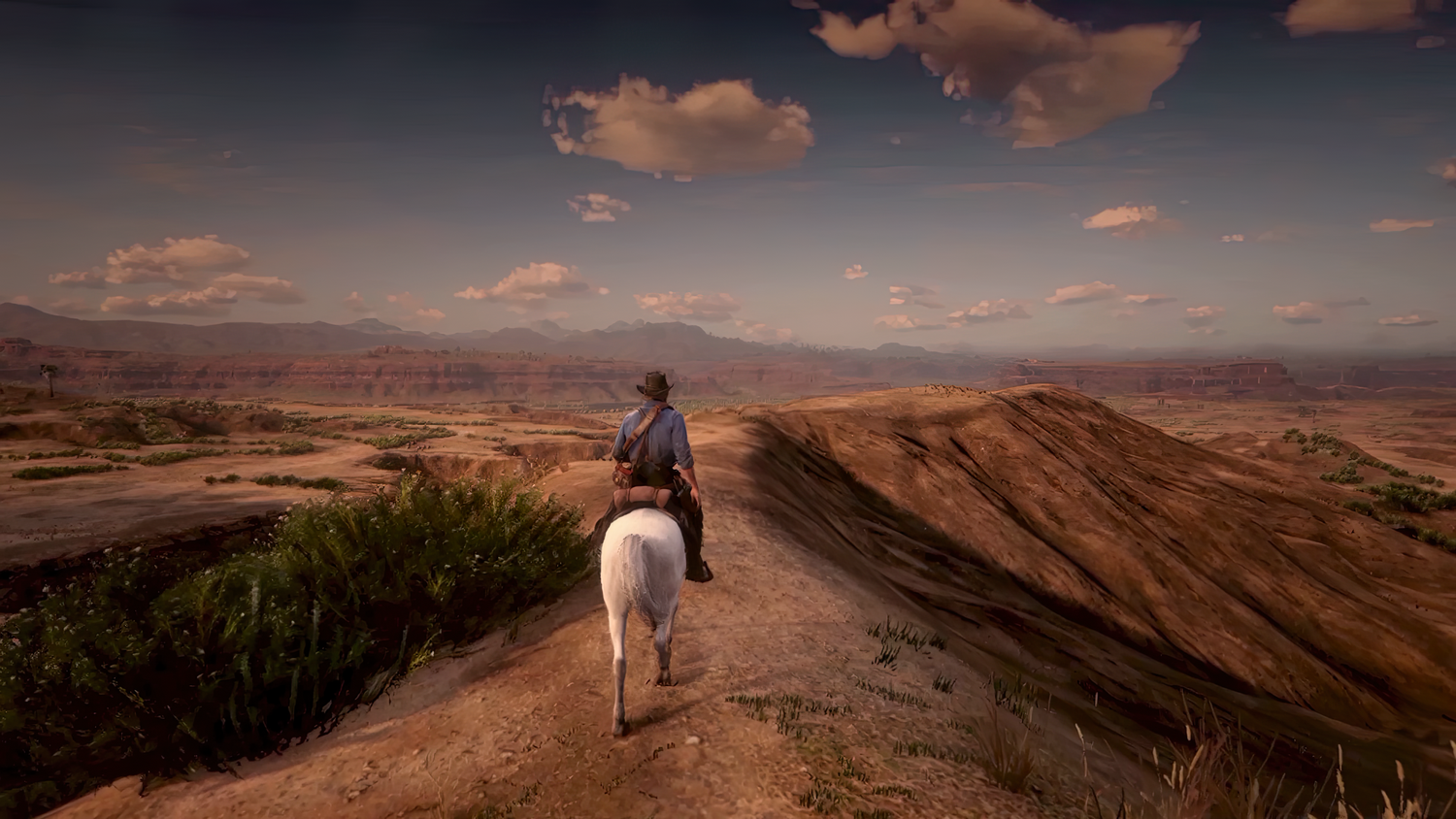A standout feature of the Slot Machinima program at MMF MMXXIV was the European debut of Steven Cottingham’s As Far as the Drone Can See. This remarkable 15-minute work delves into the intricate landscape of depicting warfare, offering a critical view on the surge of imagery from modern conflict zones. Cottingham introduces a female journalist within the military simulation software ArmA 3, challenging prevailing gender biases and probing the capacity of digital simulations to capture the nuanced realities of conflict. To fully appreciate his new work, it is useful to return toChain-Link, Cottingham’s remarkable full-length machinima, showcased on the VRAL platform in 2022.
The inception of Chain-Link can be traced back to the artist’s fascination with the creative possibilities inherent in the medium of machinima. As he explained in this interview, he views the genre as a blend of found footage and digital puppetry, where the constraints of the video game’s mechanics necessitate creative and often counterintuitive workarounds, imbuing the process with a unique form of ingenuity. This engagement with the medium allows for a reworking of game worlds into narratives that diverge significantly from their original contexts. Cottingham draws upon a wide array of influences, from the choreographic to the cinematic, to repurpose the virtual landscapes of video games into a canvas for storytelling.
At the heart of Chain-Link lies the tension between creativity and constraint, a theme that resonates both within the film’s narrative and its production process. The characters navigate a world where surveillance and control pervade every aspect of existence, mirroring the constraints Cottingham himself navigated in creating the film. This theme is not just a narrative device but also a reflection on the process of machinima, where the limitations imposed by the game engine and the available mods and add-ons prompt a constant negotiation with the material at hand…
(continues)
Matteo Bittanti
Works cited
Steven Cottingham
Chain-link, single-channel HD video, comprising machinima, 3D animation, and found footage with sound, 90’ 1”, 2022, Canada
Steven Cottingham
As Far As The Drone Can See, single channel HD Video, comprising machinima, 3D animation, and found footage with sound, 15’ 50”, 2023, Canada
Steven Cottingham, Liljana Mead Martin
MACHINE CINEMA, The making of Chain-Link, digital video, color, sound, 12’ 03”, 2023, Canada
This content is exclusive to Patreon subscribers. To gain full access, consider joining our vibrant community.

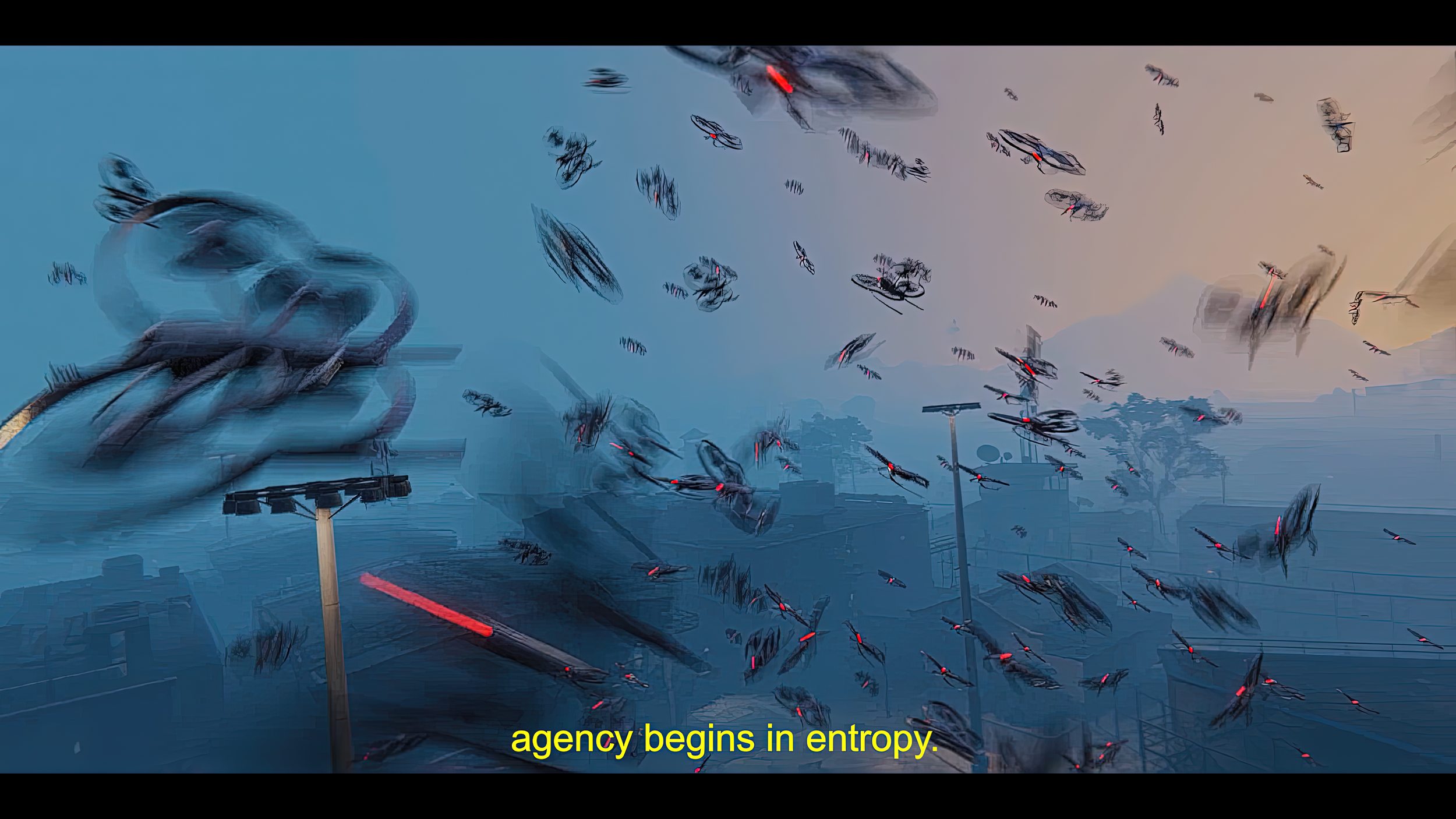
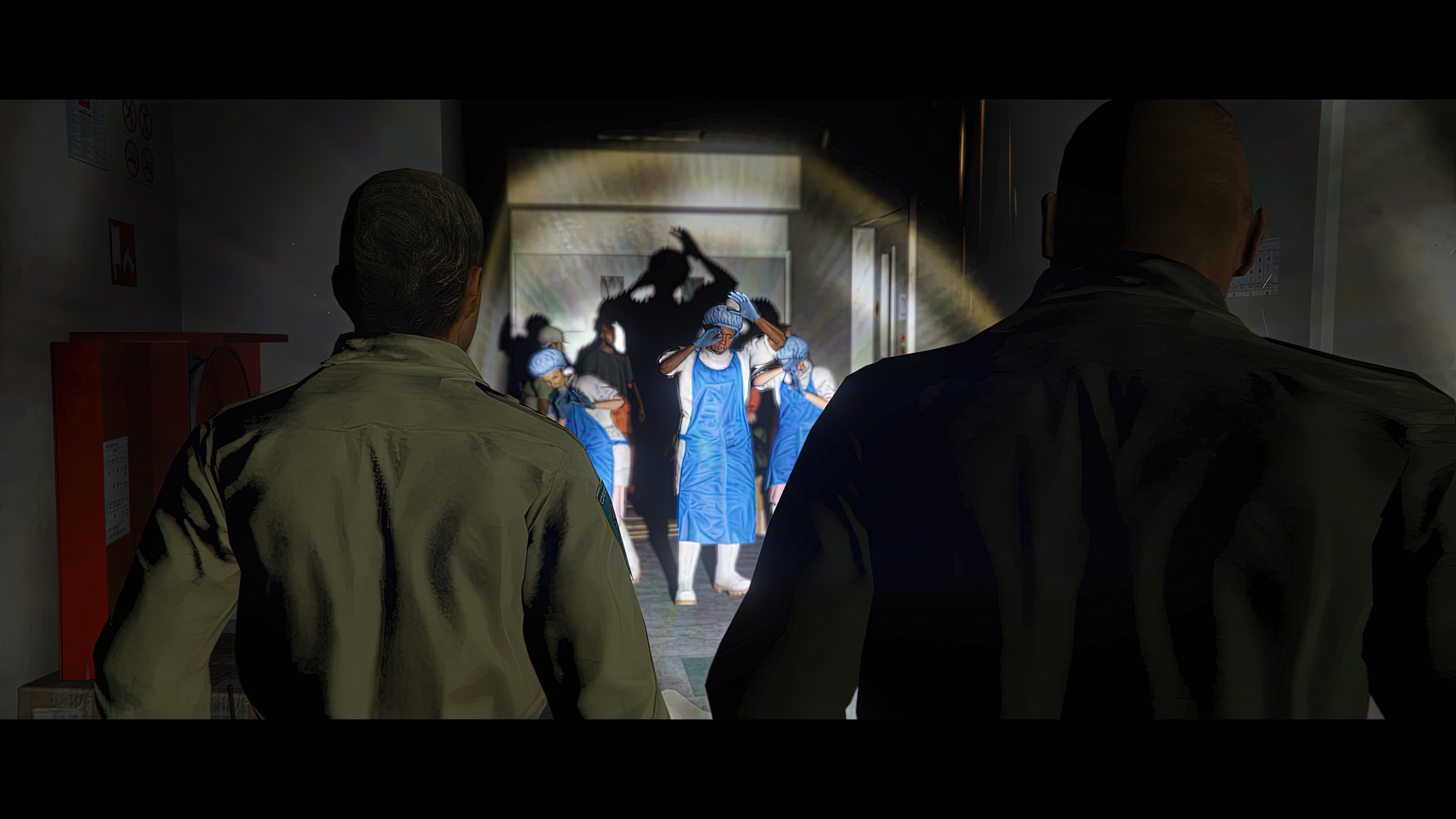
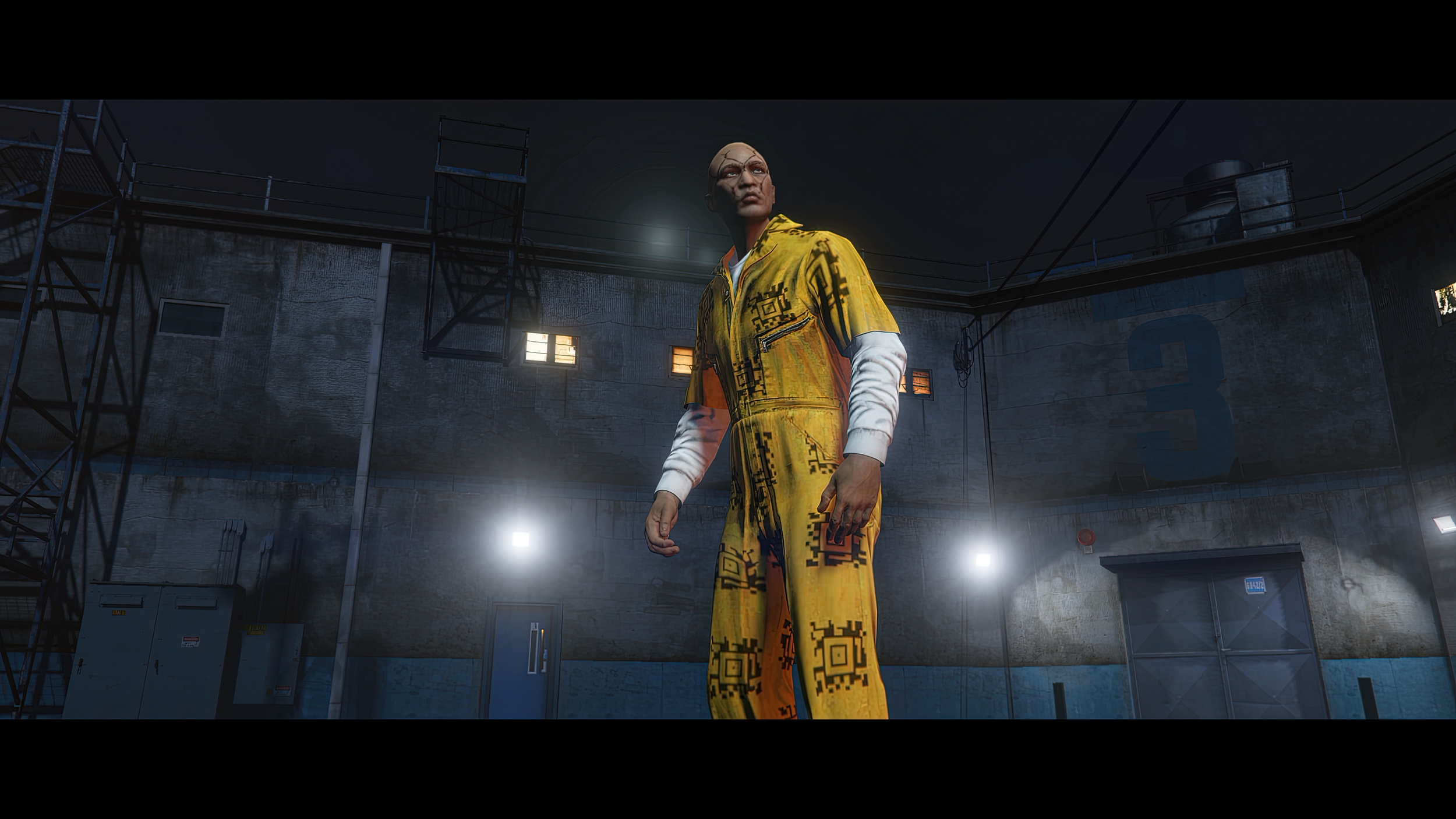
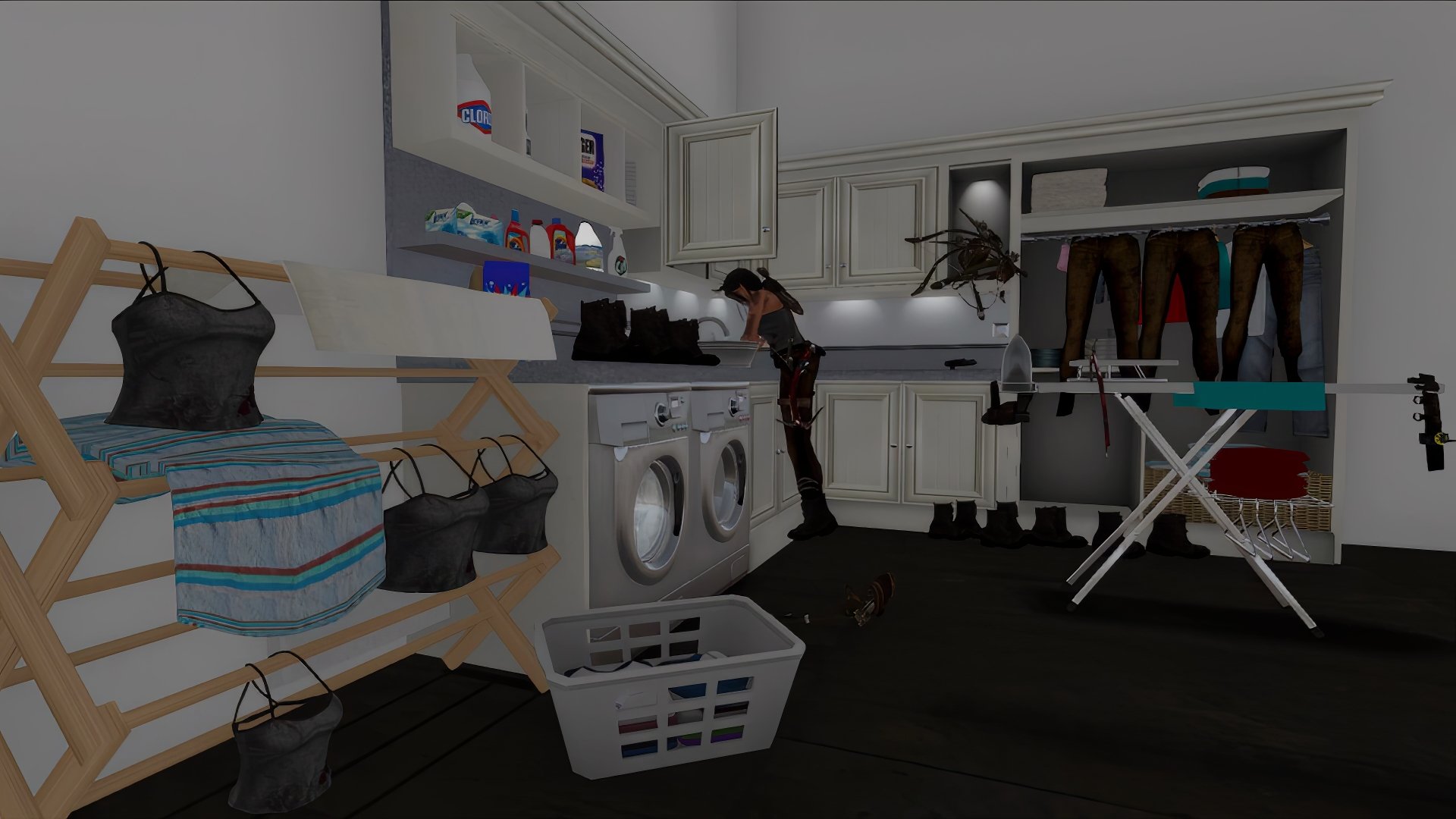


![George Roxby Smith, Fair Game [Run like a girl] , in-game performance, machinima (color, sound, 13' 56"), 2015](https://images.squarespace-cdn.com/content/v1/5a92a15fcef372c749ca0487/1707601223248-1BKXK9BXW7QWPV4QEM9P/run+like+a+girl1.png)
![George Roxby Smith, Fair Game [Run like a girl] , in-game performance, machinima (color, sound, 13' 56"), 2015](https://images.squarespace-cdn.com/content/v1/5a92a15fcef372c749ca0487/1707601223911-EEQIQFP8HITWQ64KVIAA/run+like+a+girl0.png)
![George Roxby Smith, Fair Game [Run like a girl] , in-game performance, machinima (color, sound, 13' 56"), 2015](https://images.squarespace-cdn.com/content/v1/5a92a15fcef372c749ca0487/1707601224615-ZHD2C5C5O2UE82G42DUN/run+like+a+girl7.png)
![George Roxby Smith, Fair Game [Run like a girl] , in-game performance, machinima (color, sound, 13' 56"), 2015](https://images.squarespace-cdn.com/content/v1/5a92a15fcef372c749ca0487/1707601225483-DK99UXSU3S2WZH6K22V0/run+like+a+girl6.png)
![George Roxby Smith, Fair Game [Run like a girl] , in-game performance, machinima (color, sound, 13' 56"), 2015](https://images.squarespace-cdn.com/content/v1/5a92a15fcef372c749ca0487/1707601226817-I97WHMBC75ZYTX19ST7G/run+like+a+girl2.png)
![George Roxby Smith, Fair Game [Run like a girl] , in-game performance, machinima (color, sound, 13' 56"), 2015](https://images.squarespace-cdn.com/content/v1/5a92a15fcef372c749ca0487/1707601227601-1K7F5QYE0LAMHEIVICGK/run+like+a+girl4.png)
![George Roxby Smith, Fair Game [Run like a girl] , in-game performance, machinima (color, sound, 13' 56"), 2015](https://images.squarespace-cdn.com/content/v1/5a92a15fcef372c749ca0487/1707601228132-UGLL56PYRS5C0KQEQ0TW/run+like+a+girl3.png)
![George Roxby Smith, 99 Problems [WASTED] , in-game performance, machinima (color, sound, 4' 45"), 2014](https://images.squarespace-cdn.com/content/v1/5a92a15fcef372c749ca0487/1707481097134-Q9K31ND3GTC16YGOLLJX/Roxby+Smith_99problems_15.png)
![George Roxby Smith, 99 Problems [WASTED] , in-game performance, machinima (color, sound, 4' 45"), 2014](https://images.squarespace-cdn.com/content/v1/5a92a15fcef372c749ca0487/1707481101079-3560FNG2Z8RN1S3LQGLA/Roxby+Smith_99problems_16.png)
![George Roxby Smith, 99 Problems [WASTED] , in-game performance, machinima (color, sound, 4' 45"), 2014](https://images.squarespace-cdn.com/content/v1/5a92a15fcef372c749ca0487/1707481099696-UZ7U3ZUL2UX4ARZLI3UL/Roxby+Smith_99problems_3.png)
![George Roxby Smith, 99 Problems [WASTED] , in-game performance, machinima (color, sound, 4' 45"), 2014](https://images.squarespace-cdn.com/content/v1/5a92a15fcef372c749ca0487/1707481088316-D58VZM5S8RFLEFENOOUZ/Roxby+Smith_99problems_23.jpeg)
![George Roxby Smith, 99 Problems [WASTED] , in-game performance, machinima (color, sound, 4' 45"), 2014](https://images.squarespace-cdn.com/content/v1/5a92a15fcef372c749ca0487/1707481090030-RMVV55A34LDM3VAXL6PN/Roxby+Smith_99problems_24.jpeg)
![George Roxby Smith, 99 Problems [WASTED] , in-game performance, machinima (color, sound, 4' 45"), 2014](https://images.squarespace-cdn.com/content/v1/5a92a15fcef372c749ca0487/1707481090826-KGRC5WF2TFB8S9MQ5564/Roxby+Smith_99problems_25.jpeg)
![George Roxby Smith, 99 Problems [WASTED] , in-game performance, machinima (color, sound, 4' 45"), 2014](https://images.squarespace-cdn.com/content/v1/5a92a15fcef372c749ca0487/1707481092619-I8S0P9MJUC52T4RSUKQO/Roxby+Smith_99problems_21.jpeg)
![George Roxby Smith, 99 Problems [WASTED] , in-game performance, machinima (color, sound, 4' 45"), 2014](https://images.squarespace-cdn.com/content/v1/5a92a15fcef372c749ca0487/1707481094660-M0V0C0TBPHY3LIWETTAI/Roxby+Smith_99problems_22.jpeg)
![George Roxby Smith, 99 Problems [WASTED] , in-game performance, machinima (color, sound, 4' 45"), 2014](https://images.squarespace-cdn.com/content/v1/5a92a15fcef372c749ca0487/1707481091786-33OF5VKN0J74HW7EJ147/Roxby+Smith_99problems_26.jpeg)
![George Roxby Smith, 99 Problems [WASTED] , in-game performance, machinima (color, sound, 4' 45"), 2014](https://images.squarespace-cdn.com/content/v1/5a92a15fcef372c749ca0487/1707481095812-WZ8PQG26MGQ2R2FFL911/Roxby+Smith_99problems_2.png)
![George Roxby Smith, 99 Problems [WASTED] , in-game performance, machinima (color, sound, 4' 45"), 2014](https://images.squarespace-cdn.com/content/v1/5a92a15fcef372c749ca0487/1707481098359-EHIS9H1BBAJ4QCJM42H5/Roxby+Smith_99problems_9.png)
![George Roxby Smith, 99 Problems [WASTED] , in-game performance, machinima (color, sound, 4' 45"), 2014](https://images.squarespace-cdn.com/content/v1/5a92a15fcef372c749ca0487/1707481139980-8CSQ1YXZL1U3H52IV8ZU/Roxby+Smith_99problems_17.png)
![George Roxby Smith, 99 Problems [WASTED] , in-game performance, machinima (color, sound, 4' 45"), 2014](https://images.squarespace-cdn.com/content/v1/5a92a15fcef372c749ca0487/1707481146060-46QTDPW5H88CV5GEVTTO/Roxby+Smith_99problems_12.png)
![George Roxby Smith, 99 Problems [WASTED] , in-game performance, machinima (color, sound, 4' 45"), 2014](https://images.squarespace-cdn.com/content/v1/5a92a15fcef372c749ca0487/1707481145259-LMH3BGZABOBU3HEJJE5J/Roxby+Smith_99problems_10.png)
![George Roxby Smith, 99 Problems [WASTED] , in-game performance, machinima (color, sound, 4' 45"), 2014](https://images.squarespace-cdn.com/content/v1/5a92a15fcef372c749ca0487/1707481102838-5KBD9ZNGTATJML1N2AR0/Roxby+Smith_99problems_18.png)
![George Roxby Smith, 99 Problems [WASTED] , in-game performance, machinima (color, sound, 4' 45"), 2014](https://images.squarespace-cdn.com/content/v1/5a92a15fcef372c749ca0487/1707481103944-HE2U036ICLWRLCALKBD4/Roxby+Smith_99problems_13.png)
![George Roxby Smith, 99 Problems [WASTED] , in-game performance, machinima (color, sound, 4' 45"), 2014](https://images.squarespace-cdn.com/content/v1/5a92a15fcef372c749ca0487/1707481105933-2W6F8YDC1GTR51AOZDGY/Roxby+Smith_99problems_14.png)
![George Roxby Smith, 99 Problems [WASTED] , in-game performance, machinima (color, sound, 4' 45"), 2014](https://images.squarespace-cdn.com/content/v1/5a92a15fcef372c749ca0487/1707481140475-VC4Q9ERH73Q24832WTHD/Roxby+Smith_99problems_0.png)
![George Roxby Smith, 99 Problems [WASTED] , in-game performance, machinima (color, sound, 4' 45"), 2014](https://images.squarespace-cdn.com/content/v1/5a92a15fcef372c749ca0487/1707481148477-4UEBN9J2TTT2RLLHAS7N/Roxby+Smith_99problems_11.png)

